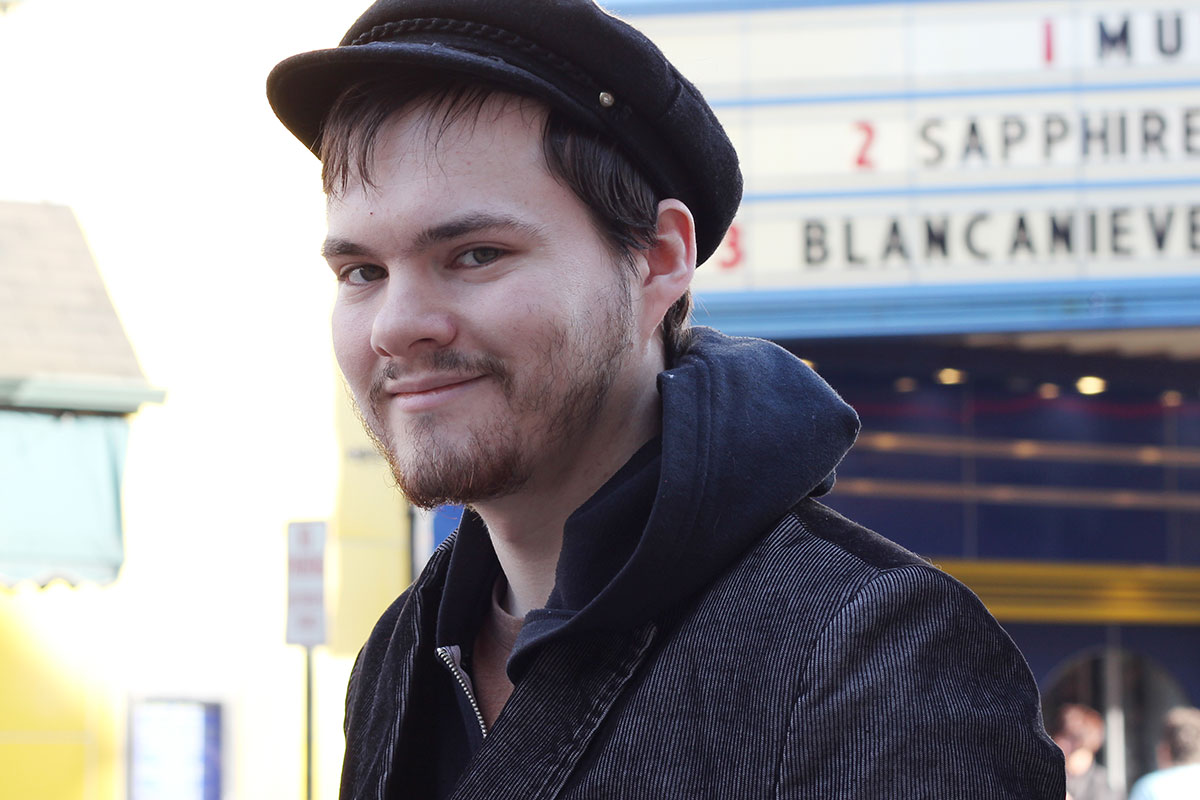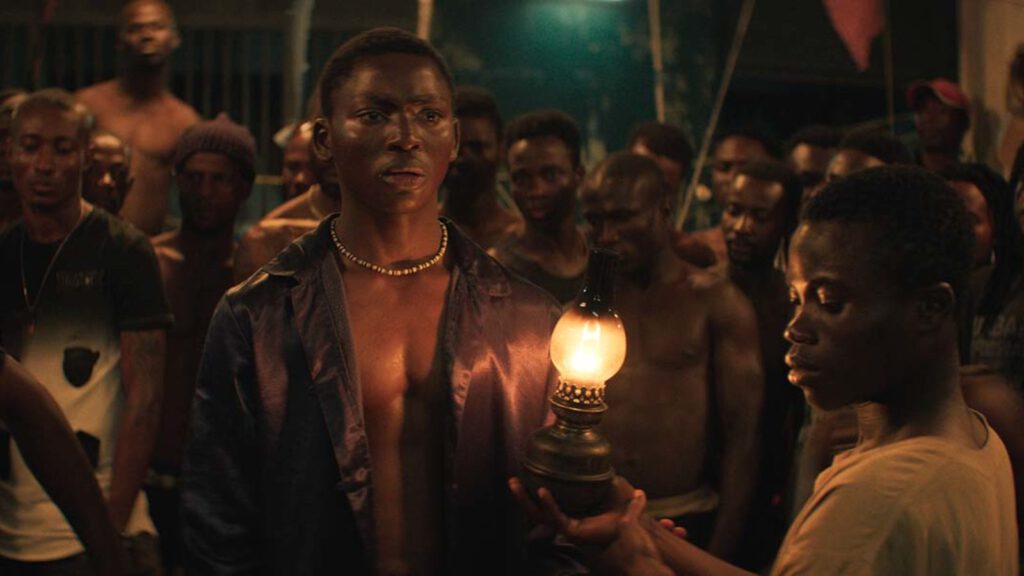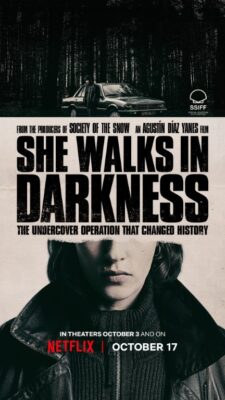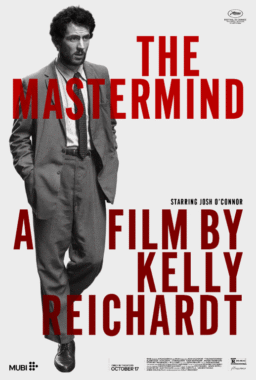The end of New York Film Festival press screenings is usually a little more bittersweet. The fall air won’t chill us on the way into the Walter Reade every morning, where anticipation rises like a head of steam just as the lights dim and everyone says their last words before the films begin. It’s not the most unique ritual but it’s ours. This year, however, it wasn’t. I never left my apartment. I didn’t see my colleagues. I didn’t get to discuss new favorites with old friends in the too-brief half hour between films every day. I looked at screens the way I would have any other day. Having said that I did appreciate the ability to pause and rewind some of these gorgeous films, to live in their longueurs a little longer. That was a privilege I’d happily accept once more.
I was grateful to have recourse to the rewind button while watching Philippe Lacôte’s stunning and hypnotic “Night of the Kings.” I wasn’t familiar with Lacôte’s work before encountering this marvel, but I’ll have to track it all down now. He’s a major talent. “Night of the Kings” is a whole ecosystem of a movie, with civilizations waiting for discovery in the words of its storyteller heroes. It follows the melancholy travails of Roman (Bakary Koné), the newest inmate at “La Maca,” a famously unruly prison that sits in the heart of the Ivory Coast. The inmates run the place once you get inside its walls, and that’s fine with the guards. The only night that things threaten to get out of hand happens to be Roman’s first night, the night of the Red Moon. Custom dictates that Roman must keep the rest of the inmates compelled by telling them a story until sun rise. If he can’t do that, his first night at La Maca may be his last.
Lacôte’s fashioned a kind of thrift store calligraphy with which to tell this story, pulling from both the iconic Cinema du Look mode (he even casts the school mascot Denis Lavant in a small role) and the rich and inventive tradition of Subsaharan African filmmaking (there’s a scene involving a magic duel that seems to directly reference Souleymane Cissé’s “Yeelen”). The echoes of other works are a way into his style and ambitions. The story doesn’t take a breath for us to learn its rules but it’s nevertheless obvious what the movie wants to tell us, thanks to his symbols and the clarity of his visual style. This is a frequently beautiful film about the way we crave narrative to make sense of one kind of imprisonment or another. 2020 has made us all prisoners, even if we still have a say in how we spend our sentence. The film has the tragic cool of the best of punk cinema, the rhythm of a hip-hop song, and the contours and staying power of a folktale.

Lacôte wasn’t the only one dreaming up parables. Eugène Green is back (though he never really leaves – Lincoln Center seems to show everything he makes) with “Atarrabi and Mikelats,” another of his bone-dry biblical tales. This one is apparently routed in Basque storytelling, but it’s very him all the same. Two brothers Atarrabi (Saia Hiriart) & Mikelats (Lukas Hiriart) are born to a horny female demon and the hapless mortal man she decides to bed one night. Not feeling at all inclined towards motherhood, she drops the kids off on Satan’s (Thierry Biscary) doorstep for him to raise. Atarrabi is the less obviously evil of the two and eventually decides he wants to see the wider world, but the devil keeps his shadow/soul when he tries to flee the cave they call home, which prevents him from becoming a monk. He finds love with Udana (Ainara Leemans) but he can’t commit to her for the same reason. The brothers must eventually find their way back to each other, because fate isn’t done with either of them yet.
Green’s style, wide-eyed and mannered to a fault, is always a tonic. His movies feel like school plays that gained sentience and fled the stage. Most dialogue is delivered directly to camera, the jokes are broad and ludicrous, the performances are all identically calibrated, there are breaks for music and performance, good always triumphs, after a fashion, and there’s usually a donkey. Green clearly had a lot of fun dreaming up the devil’s parlors and wardrobe, and his own version of a black mass, which is a hoot. His renaissance-inflected classicism always meshes hilariously with his wry sense of humor and this is no different, simply presenting the impossible sights and deeds of his morality play with the same bemused grin. It’s one of the most rewarding outlooks in the modern cinema, and its ending (which looks to be influenced by Marcel Carné’s “La merveilleuse visite”) though sad on paper, is nevertheless uplifting and lovely.

Less uplifting, though no less lovely, is the latest from Philippe Garrel. Garrel’s like a seasoned singer-songwriter: if you’re still buying his albums it’s because you like how he sings and plays, and you like his wistful worldview. He and Jean-Luc Godard are the last of the French New Wave filmmakers still alive and directing, and their methods are practically anathema. Godard is still reinventing the wheel and Garrel is still just trying to figure out how the heart works.
“The Salt of Tears” is deceptively simple in outline: a young man (Logann Antuofermo) falls in love with three women, one right after the other, as he tries to figure out what the rest of his life is going to be. There’s not much else to the film from a narrative standpoint, but the movie is laced with brutal detail about our emotional whims and the consequences of young lover’s actions. Written with the legend Jean-Claude Carrière, who’s been helping Garrel craft his movies for the last half decade, “The Salt of Tears” builds to a series of crushing realizations and unwanted shocks. Garrel’s been finding the ugly truths about how we comport ourselves with the people we love and/or take for granted for a long time, and this is one of his most honestly upsetting works, even with the requisite dance break (unlike Godard, he never got sick of those).
As “The Salt of Tears” articulates, it hurts to say goodbye to something that feels like it never properly happened. There were no subway rides in which to think about these movies, no hugs from friends you won’t see in some cases for a full year. Those goodbyes happened without our permission. They sometimes do. I would have loved to be able to sit over coffee and talk to some other people about the way Gianfranco Rosi’s beautiful documentary “Notturno” and Sarah Friedland’s haunting short “Drills” examine violence against children in such fascinatingly singular ways. I would have liked to have seen Ben Rivers’ “Look Then Below” on the big screen, to see the restorations of William Klein’s marvelous “Muhammad Ali, The Greatest,” and Wojciech Has’ hallucinatory “The Hourglass Sanatorium” with an audience. Cinema has been there for us in a big way while we’re trapped, and I’m so grateful I was able to focus on this incredible line-up for the last few weeks, but part of me never got over the absences. Of people, of surroundings, of the full darkness of a theatre, of the way things used to be. Some day this will end.











